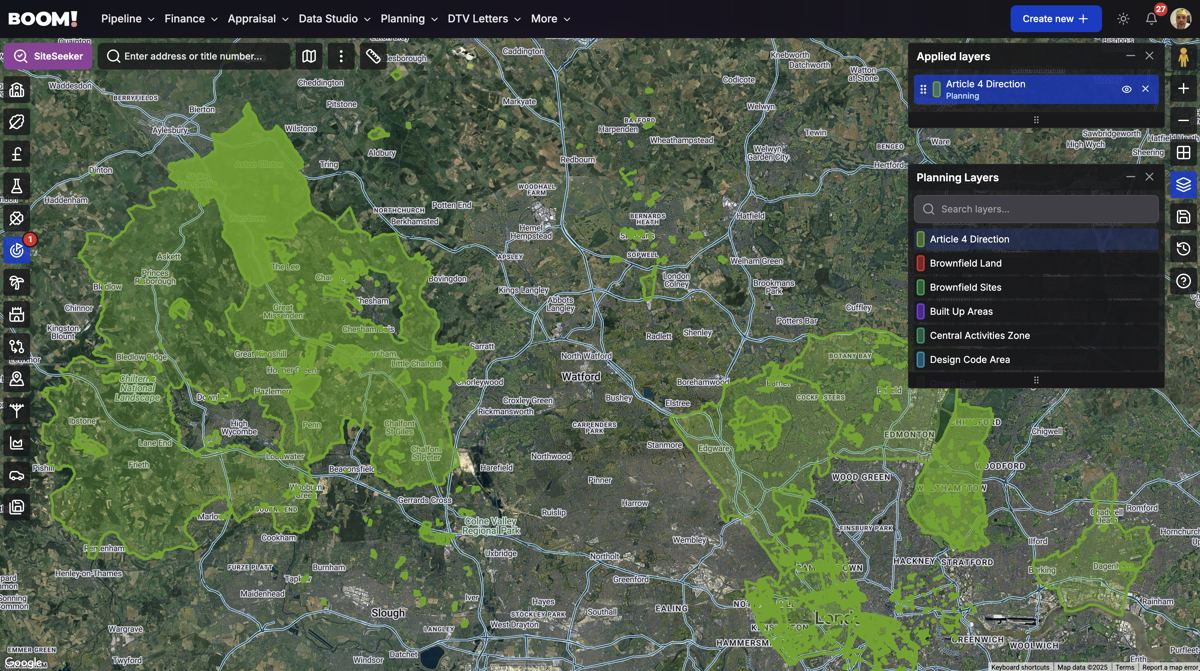Article 4 Directions 101: The Developer’s Guide to Planning Restrictions in 2025







Permitted development rights (PDR) are a major advantage for developers—until they’re taken away. That’s exactly what an Article 4 Direction does. If you’re sourcing or planning sites in England, understanding Article 4 is essential to avoid planning refusals and costly mistakes.
What Is an Article 4 Direction (And Why Should You Care)?
An Article 4 Direction is a planning tool used by local authorities to remove specific permitted development rights in defined areas. It’s most commonly used to control changes in:
Conservation areas;
Town and city centres;
High streets or areas under regeneration.
If your site falls within one of these areas, you’ll need to submit a full planning application, even for works that would normally be allowed under PDR.
How Article 4 Affects Permitted Development Rights
Many developers rely on permitted development to convert or upgrade sites quickly. Article 4 removes that fast-track route. Common restrictions include:
Class MA: Office or commercial (Class E) to residential conversions;
Conversion above shops: Adding flats above retail units;
Change of use within Class E: For example, changing a shop to a restaurant.
If an Article 4 Direction is in place, these rights no longer apply. You’ll need to apply for full permission and go through the standard planning process.
Where Article 4 Directions Are Most Common
Local authorities apply Article 4 in areas where they want more control over development. These typically include:
Town centres with high footfall;
Conservation areas or heritage zones;
Areas with pressure on housing or specific use types (e.g. HMOs);
High streets undergoing regeneration.
Each council sets its own Article 4 boundaries, so it’s critical to check local policy maps before making decisions.
Why Developers Get Caught Out
Article 4 isn’t always obvious. Many developers miss it because they:
Focus only on national PDR rules;
Assume prior approval applies when it doesn’t;
Skip checking local planning maps during due diligence;
Take estate agent listings at face value without verifying planning status;
This can lead to unexpected refusals, delayed projects, and added costs.
Case Example: Article 4 Stops a Flat Conversion in Manchester
In 2024, a developer acquired a former Class E commercial unit just outside Manchester’s city centre. The plan was to convert it into 8 flats using Class MA.
However, the site fell within a newly designated Article 4 area. The council rejected the prior approval application, and a full planning application was required. The result: a six-month delay and added consultant and redesign fees.
How to Check for Article 4 Before You Commit
Use BOOM! to automatically flag Article 4 constraints when sourcing sites;
Read the council’s Article 4 consultation documents;
Consult Local Plans.
Conclusion: Know Where PDR Stops and Full Planning Starts
Article 4 Directions are increasingly common, particularly in urban and high-demand areas. For developers, they mark the line between a quick conversion and a full planning process.
Get familiar with local restrictions early in your workflow. With the right checks in place, you’ll avoid surprises—and stay ahead of developers who don’t do their homework.

How BOOM! Makes Identifying Article 4 Designations Simple
BOOM! takes the complexity out of Article 4. Our dedicated Article 4 layer within Data Studio clearly highlights designated areas, so you can assess a site’s planning potential at a glance — before you waste time or resources.
This data is fully integrated into SiteSeeker, allowing you to explore the raw designations and apply them directly as constraints in your sourcing strategy. It’s a smarter, faster way to filter out planning risk and stay focused on viable opportunities.